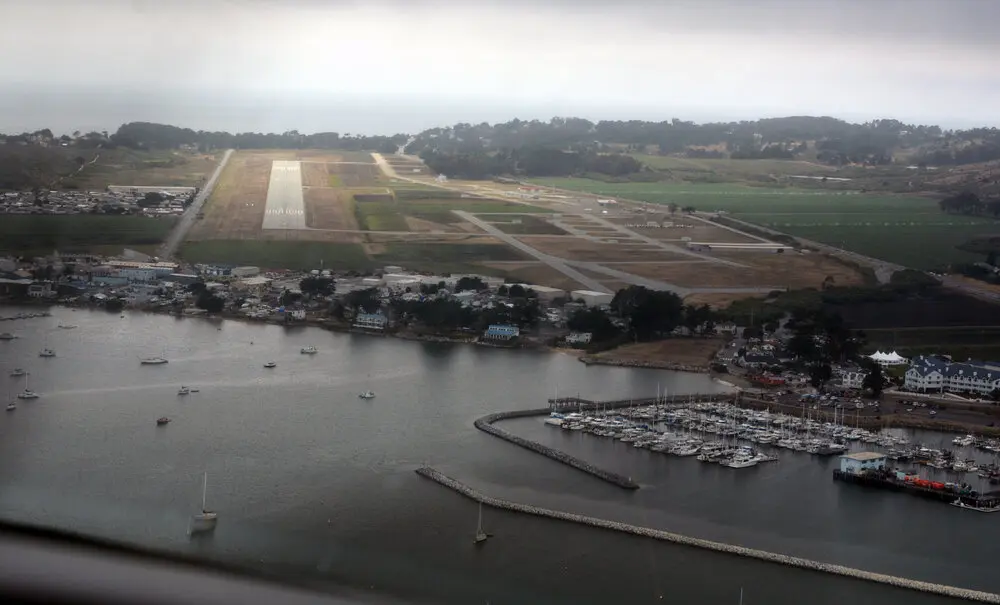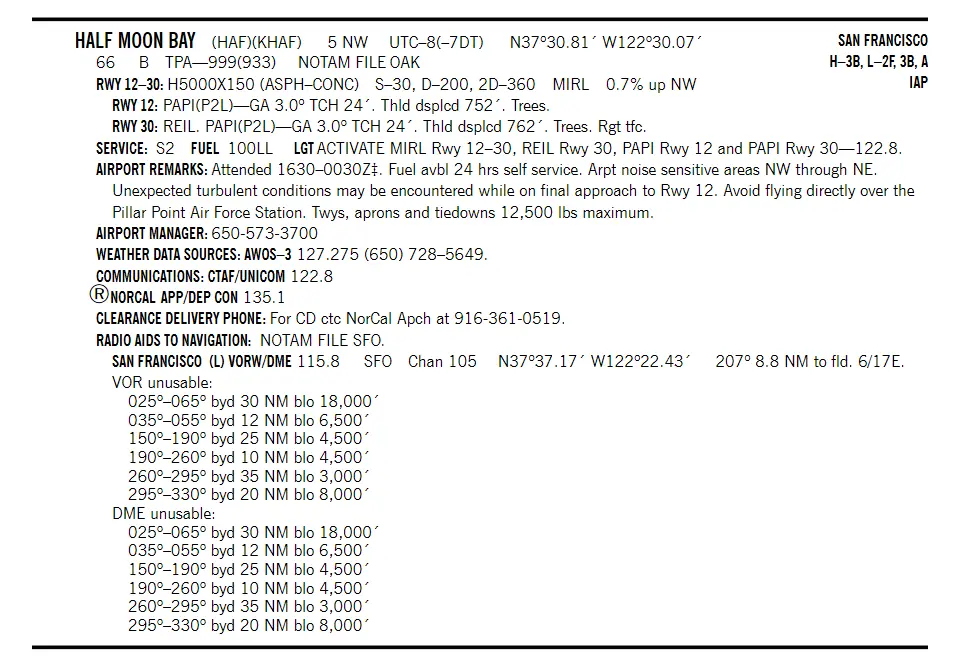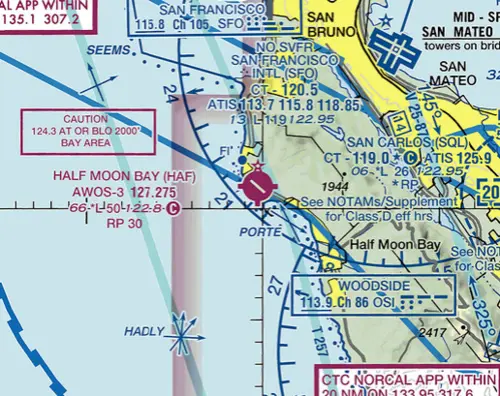
The Half Moon Bay Airport is located on the scenic Northern California coast about 20 miles south of San Francisco. It was constructed by the California State Highway Department for the U.S. Army in 1942. The Army turned the Airport over to the Navy following the end of WWII and the County acquired the Airport from the Navy in 1947. The spectacular coastline around the airport makes for a truly amazing approach.
Once you park, the marina is just a short walk offering fantastic eats. And if you’re in the mood for an adventure, the nearby beach offers a great opportunity to walk off those eats. In fact, the local area is littered with incredible vistas and scenic hikes. But by far the best part of Half Moon Bay aside from the epic flight along the coastline to get there, is the town itself.
Year-round camping is also available. The camping areas are grassy fields (for tent camping). Each camping area has a fire pit, fire wood, fire extinguisher, picnic table, and shared portable restroom. Camping is included in the overnight transient ramp parking fee ($15-25/night). No advance reservations are required and space available on a first come-first served basis. Camping is limited to 5 nights per month, per aircraft/airport user.
Carefully evaluate the weather before venturing up to Half Moon Bay. Since the airport sits along the coast, IFR conditions are very common, especially in summer months. The weather can change quickly so plan accordingly.




The trek to Half Moon Bay from Van Nuys can take you down several paths. Depending if you’re flying VFR or IFR, the routing will take you northbound. Flying up the coast can be tempting, but be wary of MOAs and Restricted Areas along that route. We always recommend being on flight following throughout your journey. Also be careful, if following the coast up, to account for those “what if” moments. There are several stretches along the coast with no airports in range and where emergency landing sites are scarce. Sticking in land as you trek up may be less scenic, but offers more pit stops and a greater margin of safety.